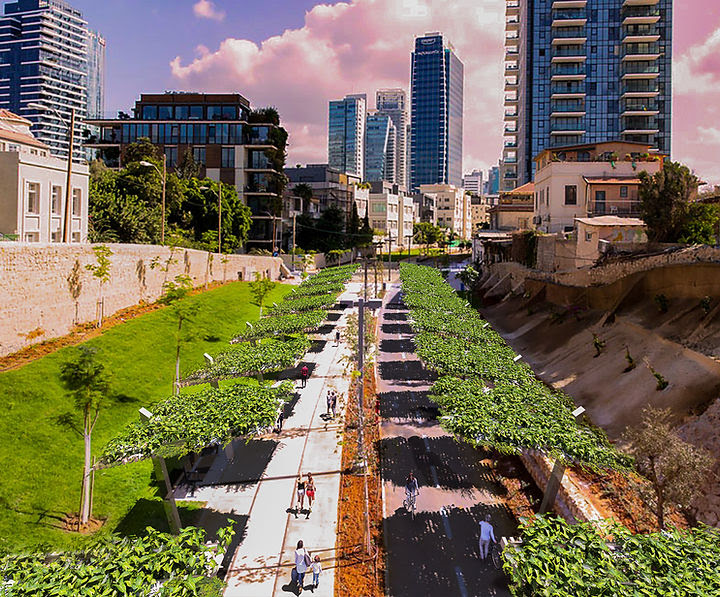
Some urban areas are characterized by higher temperatures than their immediate surroundings: these are known as urban heat islands. To combat the excessive heat in these areas, an Israeli start-up has developed a modular, intelligent hydroponic shading system.
Global warming is accentuating certain disturbances, such as the multiplication of artificially maintained hot zones in urban environments, due in particular to human activity and soil artificialisation. These urban heat islands have higher daytime and nighttime temperatures than the surrounding areas. To combat this phenomenon, some cities have already begun repainting building facades in light colors, such as white, or have replaced certain concrete areas with vegetation.
According to a study published in 2021, scientists estimate that planting trees in cities can generate a temperature drop of around 10 ˚C. Israeli start-up BioShade has unveiled a project with a similar cooling objective, creating shade, improving air quality and generating a natural cooling effect to reduce the number of urban heat islands.
The company claims to be developing vertical hydroponic technologies that increase growth rates and save water compared with growing plants in the ground. The shading system can provide large areas of organic shade in months rather than years. The hydroponic shade system developed by BioShade is modular and can be adapted to transform any type of urban building into a green space.
Plant growth is fully automated and the system runs on solar energy. The use of hydroponics enables plants to grow twice as fast as those grown on soil, and saves a great deal of water – around 80% compared with conventional cultivation, according to BioShade. Other advantages include low maintenance and the ability to recycle water to avoid wastage. The hydroponic shading proposed by BioShade creates a cooler microclimate, up to a temperature reduction of around 10 ˚ C, and helps reduce the number of urban heat islands. By using plants, this cooling system promotes the capture of CO2 from the atmosphere through photosynthesis, offers an alternative to traditional ventilation and air-conditioning systems, which generate greenhouse gases and is estimated to save around 27% compared to the use of conventional cooling systems.




